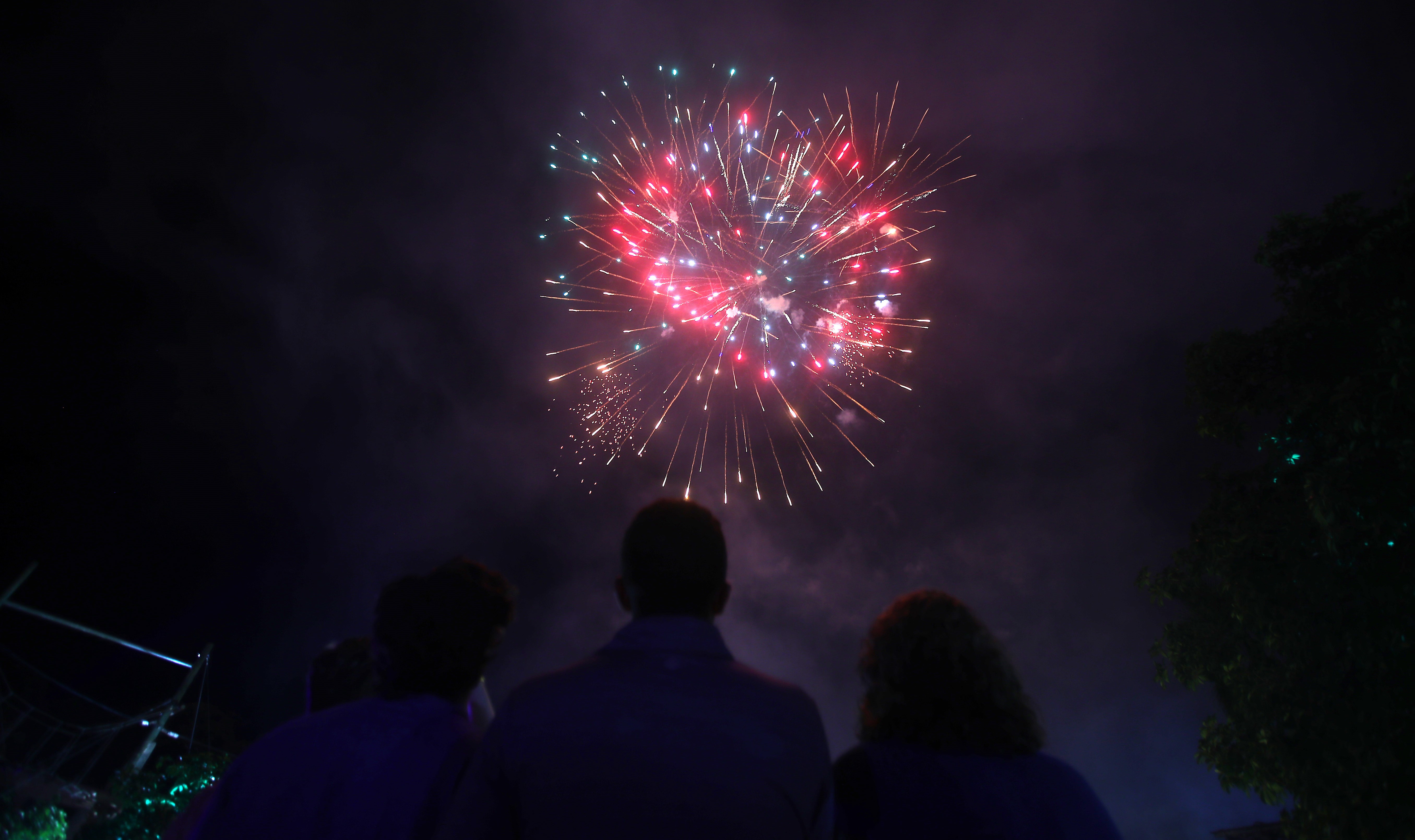The crackle, fizz and bang of fireworks exploding overhead in a shower of intense colours is considered the highlight of many festivals and celebrations. But have you ever taken a moment to imagine how your local wildlife feels about it?
Fear, including the fear of loud noises, is deeply rooted in the evolutionary history of all animals. Shying away from dangerous situations increases survival. For example, hiding away from loud thunderstorms and running away from the noise of falling rocks might save an animal’s life.
But there is nowhere to hide from fireworks. What must it be like for the wild animals that delight us on walks and picnics to be confronted with such an inescapable barrage of sound?
Unfortunately, scientists don’t know much about exactly how fireworks impact animals as they’re difficult to observe at night. But what we have learnt is alarming. Our recent study, one of the first to study how fireworks affect wildlife, showed how physically distressed animals – in this case geese – were made by New Year’s firework celebrations.
 Fireworks enlighten the sky over downtown Johannesburg, South Africa, 1 January 2006, to celebrate the arrival of the New Year. EPA/STR
Fireworks enlighten the sky over downtown Johannesburg, South Africa, 1 January 2006, to celebrate the arrival of the New Year. EPA/STR
Physiological responses can be good measures of emotional arousal in animals, allowing researchers to assess whether animals are relaxed or frightened. Heart rate and body temperature increases are reliable measures of stress. In the long term, increased emotional stimulation is an indicator of poor animal welfare.
Our study investigated the physiological responses of wild greylag geese in response to New Year’s Eve fireworks in a rural area of Austria. We fitted 20 greylag geese with transmitters, which recorded two-minute averages of heart rate and core body temperature.
Daily heart rate and body temperature patterns were compared between every hour of December 31, January 1, average values for the month of December and average values for January. In the first hour of the year (when firework displays peak) the geese’s heart rates and body temperatures surged.
Compared with average values during December, hourly mean heart rate increased from 63 to 124 beats per minute (a 96% increase). Hourly mean body temperature increased from 38°C to 39°C. Heart rate returned to baseline levels between 2am and 3am on January 1, whereas body temperature didn’t drop until around 5am.
Physiological responses may be because of geese taking flight during the fireworks. They circled over their roosting area, until eventually landing again - a severe disturbance of their night time rest. It’s also a waste of precious energy during a time of year food is scarce.
Interestingly, there were pronounced differences between some subjects and some geese showed no increase in heart rate and body temperature in response to the fireworks. This suggests that like dogs, some wild animals are less fearful than others.
Our results echo other examples of how fireworks may affect birds. One study showed thousands of birds taking flight to altitudes of 500 metres for 45 minutes after New Year’s Eve fireworks in the Netherlands between 2007 and 2010, well above their daytime flight elevation which shows how disruptive the fireworks were.
In 2021, hundreds of dead starlings were found after New Year’s Eve celebrations in Rome. The exact reasons why they died are unknown, but we know loud noises cause animal panic responses which could be deadly if they hit obstacles or got lost and separated from their flock.
We also know wild animals suffer chronic stress, fertility problems and change their migration routes in response to noise. Animals can also be more sensitive to noise than humans and have different hearing ranges
Fireworks and pets
Many pet owners are acutely aware of the effects of sounds and light on their companions. In a 2019 study using an online survey, 52% of dog owners said their pets were fearful of fireworks, displaying behaviours like panting, trembling, hiding and running away.
Noise sensitivity can develop in dogs as puppies but can also have a genetic basis, with some breeds being more affected than others. For example, great Danes were found to be among the least fearful of loud noises and the Norweigan buhund was among the most frightened breeds in a 2015 study comparing 17 breeds.
Research has also found that cats, horses, rabbits and guinea pigs are scared of fireworks.
Effects of fireworks on the welfare of less common pets like parrots, reptiles and amphibians or even fish have not been scientifically studied at all.
Wildlife friendly alternatives
Given what we’re learning about fireworks’ effect on wildlife, it’s not surprising that some places are banning them altogether.
In 2021, the popular UK vacation company Centre Parcs decided to permanently cancel all firework displays to protect wildlife and instead light up their holiday camp forests with an Enchanted Light Garden. Herefordshire Council banned noisy fireworks launched from council-owned land in January 2022, partly in response to concerns about animal welfare.
There has also been increasing acceptance of firework alternatives, such as laser or drone shows. The worldwide market for drone light shows was valued at is expected to grow 18.2% until 2027. Perhaps as fireworks’ impact on animals becomes clearer, such technological solutions will become even more popular. DM/ML
This story was first published in The Conversation.
Claudia Wascher is an Associate Professor in Behavioural Biology at Anglia Ruskin University.




 epa00605155 Fireworks enlighten the sky over downtown Johannesburg, South Africa, 1 January 2006, to celebrate the arrival of the New Year. EPA/STR
epa00605155 Fireworks enlighten the sky over downtown Johannesburg, South Africa, 1 January 2006, to celebrate the arrival of the New Year. EPA/STR